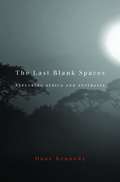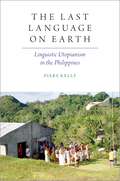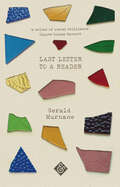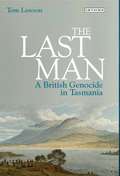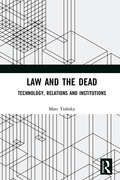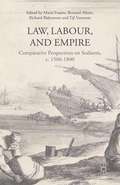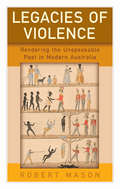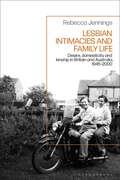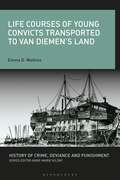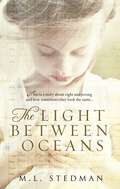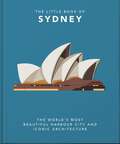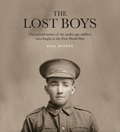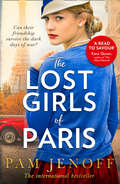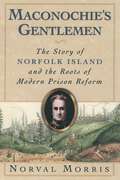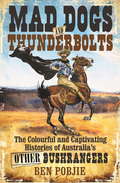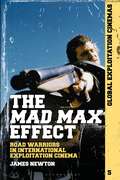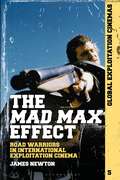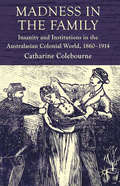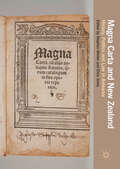- Table View
- List View
The Last Blank Spaces: Exploring Africa And Australia
by Dane KennedyThe challenge of opening Africa and Australia to British imperial influence fell to a coterie of proto-professional explorers who sought knowledge, adventure, and fame but often experienced confusion, fear, and failure. The Last Blank Spaces follows the arc of these explorations, from idea to practice, intention to outcome, myth to reality.
The Last Language on Earth: Linguistic Utopianism in the Philippines (Oxford Studies in the Anthropology of Language)
by Piers KellyThe Last Language on Earth is an ethnographic history of the disputed Eskayan language, spoken today by an isolated upland community living on the island of Bohol in the southern Philippines. After Eskaya people were first 'discovered' in 1980, visitors described the group as a lost tribe preserving a unique language and writing system. Others argued that the Eskaya were merely members of a utopian rural cult who had invented their own language and script. Rather than adjudicating outsider polemics, this book engages directly with the language itself as well as the direct perspectives of those who use it today. Through written and oral accounts, Eskaya people have represented their language as an ancestral creation derived from a human body. Reinforcing this traditional view, Piers Kelly's linguistic analysis shows how a complex new register was brought into being by fusing new vocabulary onto a modified local grammar. In a synthesis of linguistic, ethnographic, and historical evidence, a picture emerges of a coastal community that fled the ravages of the U.S. invasion of the island in 1901 in order to build a utopian society in the hills. Here they predicted that the world's languages would decline leaving Eskayan as the last language on earth. Marshalling anthropological theories of nationalism, authenticity, and language ideology, along with comparisons to similar events across highland Southeast Asia, Kelly offers a convincing account of this linguistic mystery and also shows its broader relevance to linguistic anthropology. Although the Eskayan situation is unusual, it has the power to illuminate the pivotal role that language plays in the pursuit of identity-building and political resistance.
The Last Language on Earth: Linguistic Utopianism in the Philippines (Oxford Studies in the Anthropology of Language)
by Piers KellyThe Last Language on Earth is an ethnographic history of the disputed Eskayan language, spoken today by an isolated upland community living on the island of Bohol in the southern Philippines. After Eskaya people were first 'discovered' in 1980, visitors described the group as a lost tribe preserving a unique language and writing system. Others argued that the Eskaya were merely members of a utopian rural cult who had invented their own language and script. Rather than adjudicating outsider polemics, this book engages directly with the language itself as well as the direct perspectives of those who use it today. Through written and oral accounts, Eskaya people have represented their language as an ancestral creation derived from a human body. Reinforcing this traditional view, Piers Kelly's linguistic analysis shows how a complex new register was brought into being by fusing new vocabulary onto a modified local grammar. In a synthesis of linguistic, ethnographic, and historical evidence, a picture emerges of a coastal community that fled the ravages of the U.S. invasion of the island in 1901 in order to build a utopian society in the hills. Here they predicted that the world's languages would decline leaving Eskayan as the last language on earth. Marshalling anthropological theories of nationalism, authenticity, and language ideology, along with comparisons to similar events across highland Southeast Asia, Kelly offers a convincing account of this linguistic mystery and also shows its broader relevance to linguistic anthropology. Although the Eskayan situation is unusual, it has the power to illuminate the pivotal role that language plays in the pursuit of identity-building and political resistance.
Last Letter to a Reader
by Gerald MurnaneIn the first days of spring in his eighty-second year, Gerald Murnane – perhaps the greatest living writer of English prose – began a project that would round off his strange career as a novelist. He would read all of his books in turn and prepare a report on each. His original intention was to lodge the reports in two of his legendary filing cabinets: in the Chronological Archive, which documents his life as a whole, and the Literary Archive, which is devoted to everything he has written. As the reports grew, however, they themselves took on the form of a book, a book as beguiling and hallucinatory, in its way, as the works on which they were meant to report. These miniature memoirs or stories lead the reader through the capacious territory Murnane refers to as his mind: they dwell on the circumstances that gave rise to his writing, on images and associations, on Murnane’s own theories of fiction, and then memories of a deeply personal kind. The final essay is, of course, on Last Letter to a Reader itself: it considers the elation and exhilaration that accompany the act of writing, and offers a moving finale to what must surely be Murnane’s last work, as death approaches. ‘Help me, dear one,’ he writes, ‘to endure patiently my going back to my own sort of heaven.’
The Last Man: A British Genocide in Tasmania
by Tom LawsonLittle more than seventy years after the British settled Van Diemen's Land (later Tasmania) in 1803, its indigenous population had been virtually wiped out. Yet this genocide - one of the earliest of the modern era - is virtually forgotten in Britain today. The Last Man is the first book specifically to explore the role of the British government and wider society in the destruction of the Aboriginal Tasmanians. Although the introduction of European diseases undoubtedly contributed to the decline of the indigenous population, Tom Lawson shows that Britain supported what was effectively the ethnic cleansing of Tasmania - particularly in the period of martial law in 1828-1832. He also illustrates the ways in which the destruction of indigenous Tasmanians was reflected in British culture - both at the time and since - and how it came to play a key part in forging particular versions of British imperial identity. The Last Man provides the first comprehensive picture of Britain's role in the destruction of the Tasmanian Aboriginal population.
Law and the Dead: Technology, Relations and Institutions
by Marc TrabskyThe governance of the dead in the eighteenth and nineteenth centuries gave rise to a new arrangement of thanato-politics in the West. Legal, medical and bureaucratic institutions developed innovative technologies for managing the dead, maximising their efficacy and exploiting their vitality. Law and the Dead writes a history of their institutional life in the nineteenth and twentieth centuries. With a particular focus on the technologies of the death investigation process, including place-making, the forensic gaze, bureaucratic manuals, record-keeping and radiography, this book examines how the dead came to be incorporated into legal institutions in the modern era. Drawing on the writings of philosophers, historians and legal theorists, it offers tools for thinking through how the dead dwell in law, how their lives persist through the conduct of office, and how coroners assume responsibility for taking care of the dead. This historical and interdisciplinary book offers a provocative challenge to conventional thinking about the sequestration of the dead in the nineteenth and twentieth centuries. It asks the reader to think through and with legal institutions when writing a history of the dead, and to trace the important role assumed by coroners in the governance of the dead. This book will be of interest to scholars working in law, history, sociology and criminology.
Law and the Dead: Technology, Relations and Institutions
by Marc TrabskyThe governance of the dead in the eighteenth and nineteenth centuries gave rise to a new arrangement of thanato-politics in the West. Legal, medical and bureaucratic institutions developed innovative technologies for managing the dead, maximising their efficacy and exploiting their vitality. Law and the Dead writes a history of their institutional life in the nineteenth and twentieth centuries. With a particular focus on the technologies of the death investigation process, including place-making, the forensic gaze, bureaucratic manuals, record-keeping and radiography, this book examines how the dead came to be incorporated into legal institutions in the modern era. Drawing on the writings of philosophers, historians and legal theorists, it offers tools for thinking through how the dead dwell in law, how their lives persist through the conduct of office, and how coroners assume responsibility for taking care of the dead. This historical and interdisciplinary book offers a provocative challenge to conventional thinking about the sequestration of the dead in the nineteenth and twentieth centuries. It asks the reader to think through and with legal institutions when writing a history of the dead, and to trace the important role assumed by coroners in the governance of the dead. This book will be of interest to scholars working in law, history, sociology and criminology.
Law, Labour, and Empire: Comparative Perspectives on Seafarers, c. 1500-1800
by Maria FusaroSeafarers were the first workers to inhabit a truly international labour market, a sector of industry which, throughout the early modern period, drove European economic and imperial expansion, technological and scientific development, and cultural and material exchanges around the world. This volume adopts a comparative perspective, presenting current research about maritime labourers across three centuries, in the Mediterranean Sea and the Atlantic and Indian Oceans, to understand how seafarers contributed to legal and economic transformation within Europe and across the world. Focusing on the three related themes of legal systems, labouring conditions, and imperial power, these essays explore the dynamic and reciprocal relationship between seafarers' individual and collective agency, and the social and economic frameworks which structured their lives.
Legacies of Violence: Rendering the Unspeakable Past in Modern Australia
by Robert MasonWhether in the form of warfare, dispossession, forced migration, or social prejudice, Australia’s sense of nationhood was born from—and continues to be defined by—experiences of violence. Legacies of Violence probes this brutal legacy through case studies that range from the colonial frontier to modern domestic spaces, exploring themes of empathy, isolation, and Australians’ imagined place in the world. Moving beyond the primacy that is typically accorded white accounts of violence, contributors place particular emphasis on the experiences of those perceived to be on the social periphery, repositioning them at the center of Australia’s relationship to global events and debates.
Lesbian Intimacies and Family Life: Desire, domesticity and kinship in Britain and Australia, 1945-2000
by Rebecca JenningsFocusing on patterns of intimacy, this book traces the historical roots of parenting practices and familial patterns constructed by lesbians and same-sex attracted women living in Britain and Australia between 1945 and 2000. It foregrounds women's unique lived experiences, as they expressed desire, fell in love, and created families against the backdrop of changing cultural, legal, and medical attitudes to female same-sex desire in the late 20th century.Including almost 100 original oral history interviews conducted by the author, Lesbian Intimacies and Family Life reveals the subjective histories of lesbian intimacy during the period, both highlighting the huge variety in women's experiences, and tracing shifting patterns of relationship and family formation. Combined with analysis of representations of lesbian intimacy in literature, press articles, medical texts, and archival material, the book demonstrates the ways in which changing political and cultural concepts of sexuality impacted on individual and collective attitudes.With a unique transnational perspective, Jennings uncovers how feminist and lesbian networks between Britain and Australia promoted knowledge sharing and helped foster change in the familial practices of each country – such as through the adoption of reproductive technologies and alternate routes into motherhood. Through considering the rise of divorce and challenges to traditional marriage practices in the period, this book highlights how lesbian relationships provided alternative models of interpersonal relations, impacting on broader patterns of sexuality, and helping redefine notions of the family in the modern era.
Lesbian Intimacies and Family Life: Desire, domesticity and kinship in Britain and Australia, 1945-2000
by Rebecca JenningsFocusing on patterns of intimacy, this book traces the historical roots of parenting practices and familial patterns constructed by lesbians and same-sex attracted women living in Britain and Australia between 1945 and 2000. It foregrounds women's unique lived experiences, as they expressed desire, fell in love, and created families against the backdrop of changing cultural, legal, and medical attitudes to female same-sex desire in the late 20th century.Including almost 100 original oral history interviews conducted by the author, Lesbian Intimacies and Family Life reveals the subjective histories of lesbian intimacy during the period, both highlighting the huge variety in women's experiences, and tracing shifting patterns of relationship and family formation. Combined with analysis of representations of lesbian intimacy in literature, press articles, medical texts, and archival material, the book demonstrates the ways in which changing political and cultural concepts of sexuality impacted on individual and collective attitudes.With a unique transnational perspective, Jennings uncovers how feminist and lesbian networks between Britain and Australia promoted knowledge sharing and helped foster change in the familial practices of each country – such as through the adoption of reproductive technologies and alternate routes into motherhood. Through considering the rise of divorce and challenges to traditional marriage practices in the period, this book highlights how lesbian relationships provided alternative models of interpersonal relations, impacting on broader patterns of sexuality, and helping redefine notions of the family in the modern era.
Life Courses of Young Convicts Transported to Van Diemen's Land (History of Crime, Deviance and Punishment)
by Emma D. WatkinsDrawing on digital criminal records, this book traces the life courses of young convicts who were sentenced at the Old Bailey and transported to Van Diemen's Land in the early 19th century. It explores the everyday lives of the convicts pre- and post-transportation, focusing on their crimes, punishments, education, employment and family life right up to their deaths. Emma D. Watkins contextualizes these young convicts within the punishment system, economy and culture that they were thrust into by their forced movement to Australia. This allows an understanding of the factors which determined their chances of achieving a 'settled life' away from crime in the colony.Packed with case studies offering vivid accounts of the offenders' lives, Life Courses of Young Convicts Transported to Van Diemen's Land makes an important contribution to the history of transportation, social history and Australian history.
Life Courses of Young Convicts Transported to Van Diemen's Land (History of Crime, Deviance and Punishment)
by Emma D. WatkinsDrawing on digital criminal records, this book traces the life courses of young convicts who were sentenced at the Old Bailey and transported to Van Diemen's Land in the early 19th century. It explores the everyday lives of the convicts pre- and post-transportation, focusing on their crimes, punishments, education, employment and family life right up to their deaths. Emma D. Watkins contextualizes these young convicts within the punishment system, economy and culture that they were thrust into by their forced movement to Australia. This allows an understanding of the factors which determined their chances of achieving a 'settled life' away from crime in the colony.Packed with case studies offering vivid accounts of the offenders' lives, Life Courses of Young Convicts Transported to Van Diemen's Land makes an important contribution to the history of transportation, social history and Australian history.
The Light Between Oceans: The emotional, must-read Sunday Times bestselling historical novel
by M L StedmanDiscover the sweeping Richard and Judy Book Club pick and Sunday Times bestselling historical romance, now a major motion picture starring Alicia Vikander, Michael Fassbender, and Rachel Weisz.OVER FOUR MILLION COPIES SOLD'An extraordinary book…Unforgettable' Guardian'A moving tale . . . prepare to weep' New York Times'Irresistible . . . a high concept plot that keeps you riveted from the first page' Oprah Magazine____________________After experiencing the horrors of The Western Front, Tom moves to Janus Island to work as a lighthouse keeper. He hopes that life on the remote island with his wife Izzy will bring him peace following the war.The two of them are happy together, although frustrations rise the longer they try for a child that never comes.But then, one day, a boat washes up on the shore of their little island. In it, lies a dead man - and a crying baby.Faced with an impossible decision, Tom and Izzy do what they think is right and follow their hearts. What happens next will break yours.____________________Praise for The Light Between Oceans:'A love story that is both persuasive and tender' Sunday Times‘A moving tale. One of this year's must-reads’ Stylist Magazine‘The characters are beautifully drawn . . . A completely unique read.’ Heat Magazine‘Mesmerising . . . the sheer passion and poetry of Stedman's prose carries us on a wave of emotion and heartbreak.’ Australian Woman's Weekly‘Delicate and imaginative . . . beautifully written . . . deserves every single bit of its success.’ ScotsmanWHAT READERS ARE SAYING:***** 'A beautiful, poignant story, very well told'***** 'By far, one of the best books I've ever read'***** 'A stunning and enjoyable read, one you won't forget'
The Little Book of Sydney: The World's Most Beautiful Harbour City and Iconic Architecture (The\little Book Of... Ser.)
by Orange Hippo!An inviting blend of the exhilarating and easy-going, Sydney is a multicultural city that fuses vibrant culture and nightlife with natural wonders such as national parks and golden sand. Great food, stunning views, fabulous architecture, with both beach and urban life, this destination hot-spot has something for everyone. With nature on its doorstep and good weather year-round, Sydney is the jewel in the crown of Australia.Packed with trivia, facts, travel tips, unmissable landmarks and more, The Little Book of Sydney tells you everything you need to know about the Emerald City of Oz. From a trip through its chequered history to a tour around its exciting neighbourhoods, from brunch to club, here's how to fit right in and be a Sydneysider in no time.SAMPLE QUOTE: 'If Paris is a city of lights, Sydney is the city of fireworks.' Baz Luhrmann, CNN.com interview, 5 January 2007SAMPLE FACT: With 47.7% of the population having been born overseas, there are over 250 languages are spoken in the city and over 35% of residents speak a language other than English at home. 2016 Australian Census
The Lost Boys
by Paul ByrnesIn the First World War of 1914–1918, thousands of boys across Australia and New Zealand lied about their age, forged a parent’s signature and left to fight on the other side of the world. Though some were as young as thirteen, they soon found they could die as well as any man. Like Peter Pan’s lost boys, they have remained forever young. These are their stories. This extraordinary book captures the incredible and previously untold stories of forty Anzac boys who fought in the First World War, from Gallipoli to the Armistice. Featuring haunting images of the boys taken at training camps and behind the lines, these tales are both heartbreaking and rousing, full of daring, ingenuity, recklessness, random horror and capricious luck. A unique perspective on the First World War, The Lost Boys is military history made deeply personal, a powerful homage to youthful bravery and a poignant reminder of the sacrifice of war.
The Lost Girls Of Paris: The Bon Bon Girl / The Flower Seller / The Very White Of Love / Paris By The Book / The Lost Girls Of Paris (Hq Fiction Ebook Ser.)
by Pam Jenoff‘A gripping tale’ MY WEEKLY‘Thrilling’ WOMAN‘A truly gripping read of mystery, love and heroism’ FROST MAGAZINE The Lost Girls of Paris is an emotional story of friendship and betrayal during the second world war, inspired by true events – from the international bestseller Pam Jenoff.
Love, history and emotion in Chaucer and Shakespeare: Troilus and Criseyde and Troilus and Cressida (PDF) (Manchester Medieval Literature and Culture)
by Andrew James Johnston Elizabeth Kempf Russell West-PavlovThis collection of essays explores medieval and early modern Troilus-texts from Chaucer to Shakespeare. The contributions show how medieval and early modern fictions of Troy use love and other emotions as a means of approaching the problem of tradition. As these texts reflect on their own traditionality, they highlight both the affective nature of temporality and the role of affect in scrutinising tradition itself. Focusing on a specific textual lineage that bridges the conventional period boundaries, the collection participates in an exchange between medievalists and early modernists that seeks to generate a dialogic encounter between the periods with the aim of further dismantling the rigid notions of chronology and periodisation that have kept medieval and early modern scholarship apart.
Love, history and emotion in Chaucer and Shakespeare: Troilus and Criseyde and Troilus and Cressida (Manchester Medieval Literature and Culture)
by Andrew James Johnston Elizabeth Kempf Russell West-PavlovThis collection of essays explores medieval and early modern Troilus-texts from Chaucer to Shakespeare. The contributions show how medieval and early modern fictions of Troy use love and other emotions as a means of approaching the problem of tradition. As these texts reflect on their own traditionality, they highlight both the affective nature of temporality and the role of affect in scrutinising tradition itself. Focusing on a specific textual lineage that bridges the conventional period boundaries, the collection participates in an exchange between medievalists and early modernists that seeks to generate a dialogic encounter between the periods with the aim of further dismantling the rigid notions of chronology and periodisation that have kept medieval and early modern scholarship apart.
Maconochie's Gentlemen: The Story of Norfolk Island and the Roots of Modern Prison Reform (Studies in Crime and Public Policy)
by Norval MorrisIn 1840, Alexander Maconochie, a privileged retired naval captain, became at his own request superintendent of two thousand twice-convicted prisoners on Norfolk Island, a thousand miles off the coast of Australia. In four years, Maconochie transformed what was one of the most brutal convict settlements in history into a controlled, stable, and productive environment that achieved such success that upon release his prisoners came to be called "Maconochie's Gentlemen". Here Norval Morris, one of our most renowned criminologists, offers a highly inventive and engaging account of this early pioneer in penal reform, enhancing Maconochie's life story with a trenchant policy twist. Maconochie's life and efforts on Norfolk Island, Morris shows, provide a model with profound relevance to the running of correctional institutions today. Using a unique combination of fictionalized history and critical commentary, Morris gives this work a powerful policy impact lacking in most standard academic accounts. In an era of "mass incarceration" that rivals that of the settlement of Australia, Morris injects the question of humane treatment back into the debate over prison reform. Maconochie and his "Marks system" played an influential role in the development of prisons; but for the last thirty years prison reform has been dominated by punitive and retributive sentiments, the conventional wisdom holding that we need 'supermax' prisons to control the 'worst of the worst' in solitary and harsh conditions. Norval Morris argues to the contrary, holding up the example of Alexander Maconochie as a clear-cut alternative to the "living hell" of prison systems today.
Mad Dogs and Thunderbolts
by Ben PobjieNed Kelly’s tin helmet looms large over Australia’s bushranging past, but what about all the unsung outlaws of the Australian bush? What about Black Caesar, who escaped his tyrannous British overlords four times and indeed invented the great Australian tradition of bushranging? Or Mad Dog Morgan who set out to write his name in blood on history’s ledger, the dynamic Captain Thunderbolt and his loyal wife Mary Ann Bugg, bushranging’s greatest queen, and Matthew Brady, the gentleman bushranger, who showed us all the cilivised side of armed robbery? In Mad Dogs and Thunderbolts Ben Pobjie celebrates the derring-do and revolutionary passion of all the wild colonial boys and girls who raided our towns and stole our hearts, all while wearing sensible headgear.
The Mad Max Effect: Road Warriors in International Exploitation Cinema (Global Exploitation Cinemas)
by James NewtonThe Mad Max Effect provides an in-depth analysis of the Mad Max series, and how it began as an inventive concoction ofa number of influences from a range of exploitation genres (including the biker movie, the revenge film, and the car chasecinema of the 1970s), to eventually inspiring a fresh cycle of international low budget 'road warrior' movies that appeared on home video in the 1980s.The Mad Max Effect is the first detailed academic study of the most famous and celebrated post-apocalypse film series, andexamines how a humble Australian action movie came from the cultural margins of exploitation cinema to have a profound impact on the broader media landscape.
The Mad Max Effect: Road Warriors in International Exploitation Cinema (Global Exploitation Cinemas)
by James NewtonThe Mad Max Effect provides an in-depth analysis of the Mad Max series, and how it began as an inventive concoction ofa number of influences from a range of exploitation genres (including the biker movie, the revenge film, and the car chasecinema of the 1970s), to eventually inspiring a fresh cycle of international low budget 'road warrior' movies that appeared on home video in the 1980s.The Mad Max Effect is the first detailed academic study of the most famous and celebrated post-apocalypse film series, andexamines how a humble Australian action movie came from the cultural margins of exploitation cinema to have a profound impact on the broader media landscape.
Madness in the Family: Insanity and Institutions in the Australasian Colonial World, 1860–1914
by C. ColeborneMadness in the Family explores how colonial families coped with insanity through a trans-colonial study of the relationships between families and public colonial hospitals for the insane in New South Wales, Victoria, Queensland and New Zealand between 1860 and 1914.
Magna Carta and New Zealand: History, Politics and Law in Aotearoa
by Stephen Winter and Chris JonesThis volume is the first to explore the vibrant history of Magna Carta in Aotearoa New Zealand’s legal, political and popular culture. Readers will benefit from in-depth analyses of the Charter’s reception along with explorations of its roles in regard to larger constitutional themes.The common thread that binds the collection together is its exploration of what the adoption of a medieval charter as part of New Zealand’s constitutional arrangements has meant – and might mean – for a Pacific nation whose identity remains in flux. The contributions to this volume are grouped around three topics: remembrance and memorialization of Magna Carta; the reception of the Charter by both Māori and non-Māori between 1840 and 2015; and reflection on the roles that the Charter may yet play in future constitutional debate. This collection provides evidence of the enduring attraction of Magna Carta, and its importance as a platform of constitutional aspiration.
